Being the latest manufacturing technology, 3D Printing has tremendous scopes of discoveries. After exploring the thermoplastics, plastics, and other materials, researchers are now experimenting on wood.
Imagine a day where you can print your furniture at your home! Those days are far. But how far? No, one can answer.
The only thing guiding line provided is by speculating based on the experiments that have been conducted using a wood filament.
Like we have an ABS filament, to print parts and functional prototypes based on ABS. Similarly, we would need wood filament for developing parts and functional prototypes made of wood.
Although complete filament made of wood is something that researchers have not yet had success with, they are trying with a mixture of PLA and wood and are quite successful.
So, the first reported experiment of developing a wood filament that can print parts and functional prototypes took place in 2012.
It began with mixing polymers with sawdust. The problem at that time was, the resulting part or functional prototype looked more like cardboard than wood.
Wood filament currently is PLA-based integrated into the form of wooden fibers. The research has extended its scope.
And now you can not only get one type of wood mixed with PLA, but choose between birch, coconut, bamboo, timber, cedar, and many others.
Depending on the manufacturer the wood filaments can contain any mixture percentage of wood: PLA. However, the standard one from where it started, remain 30:70.
Claims are that despite a seemingly low fraction of wood, one gets a wood-like resulting print everything from texture to smell, feels very real.
It is safe to sand the parts and functional prototypes printed by this wood, it can also be colored and used for real.
Printing Process Setting while Working with Wood Filaments
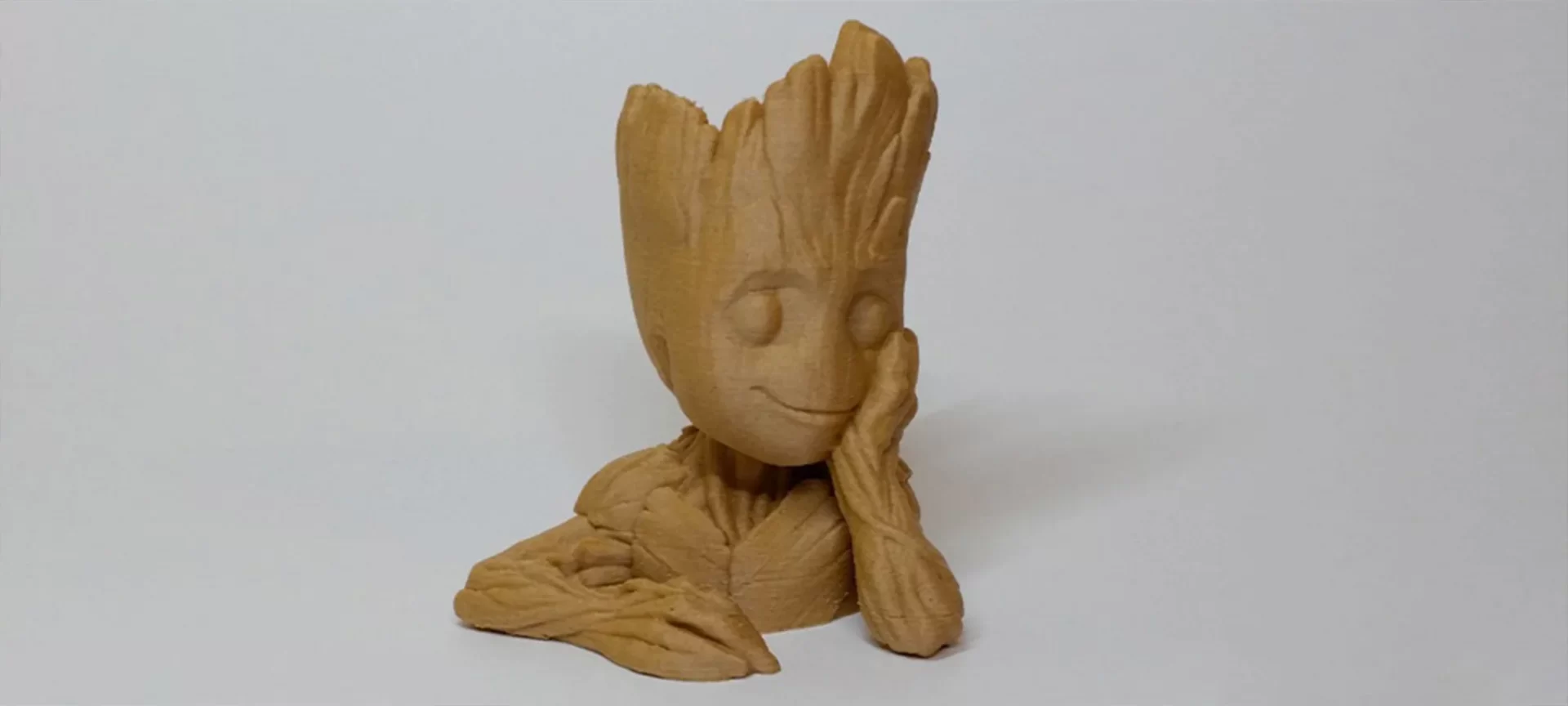
Wood filaments are not something for someone who is a novice in the field. They require an experienced hand who has previously worked on many filaments before working with these filaments.
Below mentioned are some of the tips that you can use to make you’re dealing with wood, smooth.
Using a nozzle with a larger diameter
The kinky part here is to ensure smooth flowing of dark chunks in wood filament without clogging up. Websites recommend here to use a nozzle that has at least 0.3 mm diameter or more.
The argument here is that this might need you more layers to develop the complete part or functional prototype. But the catch is, wood parts have lesser layer visibility in general than other parts or functional prototypes.
So, for example, you print with other filaments using the same nozzle that would have more layer visibility than the wooden one would.
Finding the correct temperature
A higher temperature than what is needed will produce a part or functional prototype with a darker surface finish than otherwise.
So, a key to manage perfect finishes is by managing the perfect temperature at which the material melts.
Understand this thing that there is a very fine line between a different finish and a burnt filament, so only attempt printing with wood if you have the time, patience, and knowledge to do it safely. And by chance, if you’re worried, print at the recommended print temperature.
And if you do not get the surface finish which you were looking to achieve, it’s better that you paint the finished object with whatever color stain you want. You do not have to keep any fire hazard necessarily.
Higher retraction
Normal PLA is not as running as wood filaments and wood material. So, even when they are flowing through the heated larger nozzle it will lead to material drag provided if you don’t adjust how fast the material comes out of the extruder.
For avoiding such a condition you would have to make sure you adjust to the recommended retraction. Instead of leaving the temperature as it was while working with the previous material, take some attention to the retraction speed settings and distance. Doing this would easily make a difference.
Print speed and layer heights can be higher in an amount
Avoiding your wood filament from moving through the extruder is more important than making the part or functional prototype wobble less on the Z-axis or taking care that the layers are chunkier.
So, allow greater layer heights, as mentioned earlier in the article, layer visibility is not much of an issue.
Keep higher print speed, because the lesser time it is spent in the extruder, the lesser are the chances of the wood to ignite, and less of a chance you’ll have to clean up that mess.
By ensuring that your printer is secured for as little frame movement as possible, and sand down you are on a safer end for achieving your preferred standards.
Using the filament only when you are printing with it
The are chances that the wood filament can burn itself if left unattended in a printer nozzle which has not yet been cooled down.
Even if the printer nozzle has been stopped for some reason, this will result in a nozzle clogged with blackened, hardened wood.
And if you are someone who has already learned this lesson the hard way, try and run a cleaning filament through your extruder.
Doing so would easily be inexpensive to you and is also recommended as something which is a must to have in case you are working with wood.
So, it is advised, and we think this should go as something called 3D Printing manners. No matter whether the filament you are printing with is made up of wood or any other material.
you should use the filament only when you are printing with them. So, the key is to think before making up your mind to 3D print.
Otherwise what all things you need before starting to 3D print, not just with wood filament but with any filament in general.
The next part of our article is concerned with providing you suggestions for buying a wood filament.
Laywoo Filaments
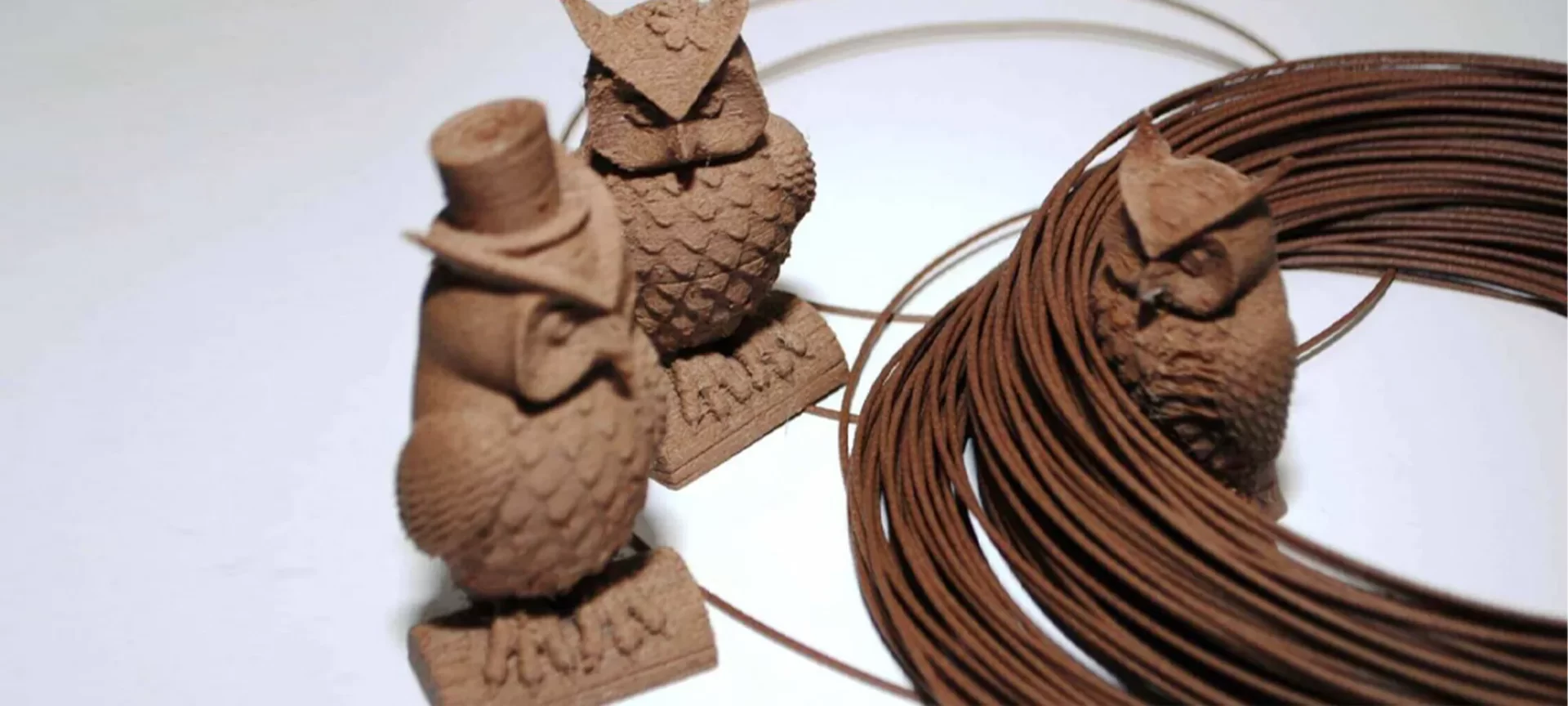
The wood filament was invented by the founder of this company named Kai Party in2013. Lay Filaments sells a wood filament that is light cherry in color, which means that one can experiment with temperatures to create different colored finishes.
Another type of wood filament that this company sells is a flexible wood filament that’s one of a kind and super useful for people who are just starting out with wood filaments since there’s more give to work with.
These filaments are available on MatterHackers for around $35. The point to remember here is that these filaments are sold in bundles that are less than standardized full spools.
You’ll get about 100 grams from most sellers online, and then it’s up to you to do some math to figure out if that will really be the best bet for you.
Fillamentum
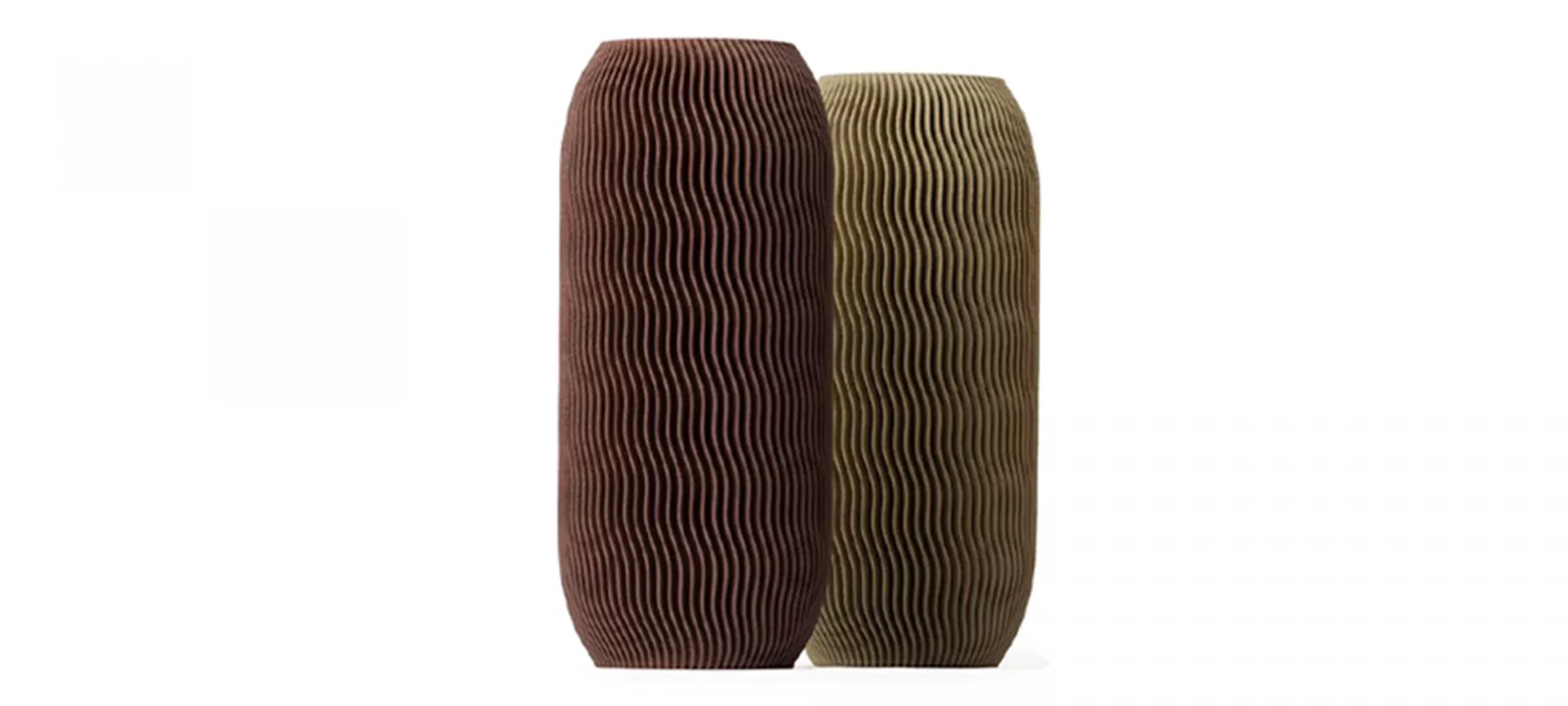
The Fillamentum Timberfill is a filament that is based on PLA material which is 100% biodegradable wood filament.
Timberfill is a company that offers excellent surface finish, for making the parts look as if they are carved out of wood.
Apart from the great mechanical properties for a wood filament, Timberfill also does a pretty decent job of hiding the layers in the parts or functional prototypes.
This filament comes in four different colors, which enables the top-notch look of final printed parts.
The final composition of this filament is 70 percent PLA and 30 percent wood. Color options that you get with this print are Champagne, Cinnamon, Rosewood, and Light Wood Tone.
The diameter of this filament is 1.75 mm or 2.85 mm, whereas the spool size is 1 kg, but you also get 750 g of the material itself at $49.
The recommended printing temperatures of this filament is 170-185 °C hot end and 50-60 °C heated bed.
MG Chemicals
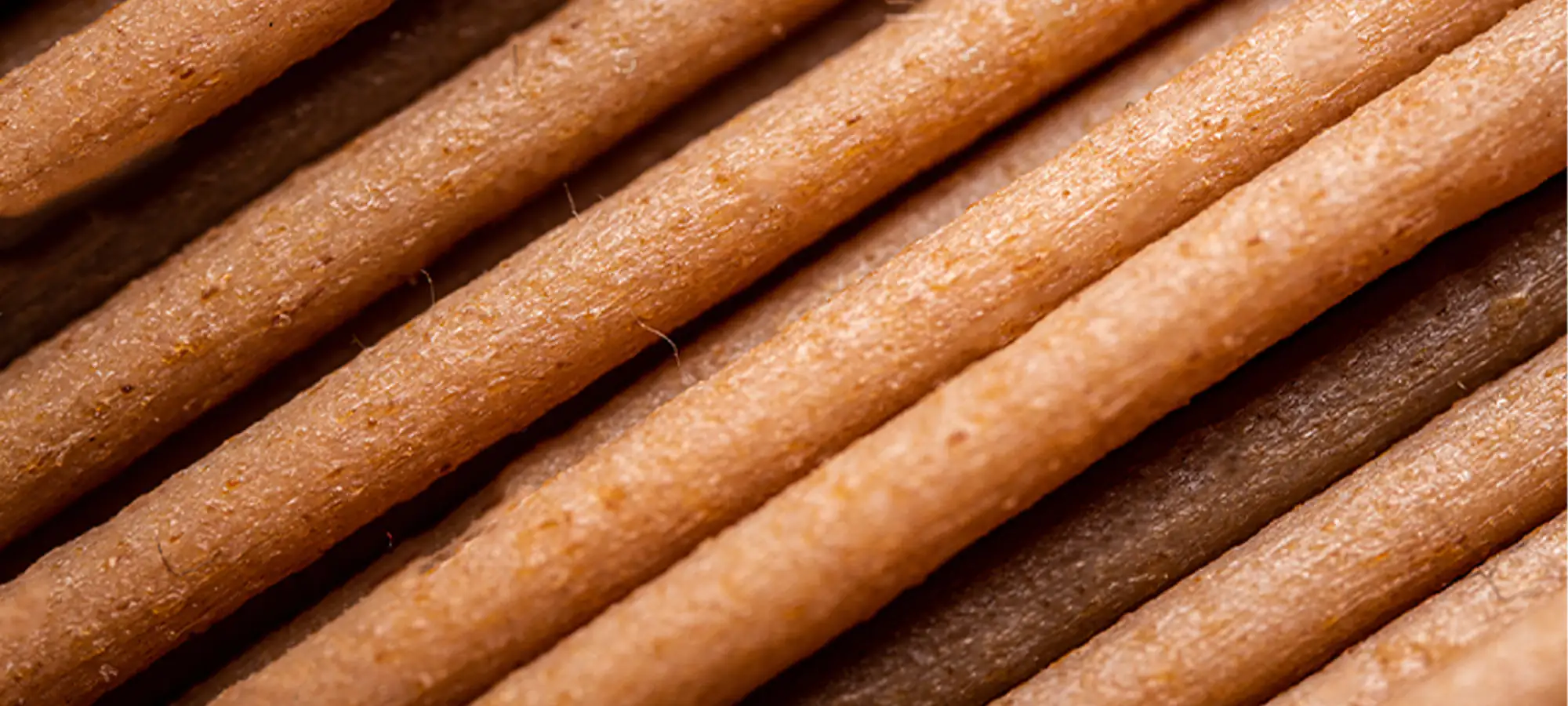
For the wood particles, the material used by these guys is popular. 25 percent of poplar is mixed with PLA making the complete filament a hybrid of PLA and wood.
It is observed that poplar wood particles are larger than other wood filaments. Take this observation into account and make sure you have a nozzle that can open to 0.4 mm to prevent any clogging from happening.
If you happen to accidentally burn up any filament in the extruder, it will be harder than it takes usual filaments to scrape out because of the size of the poplar wood’s pieces. If you are new to 3D printing, this filament is something very easy to start with!
This filament is as sturdy as any other standard wood filament while being as much of a bargain as its thermoplastic cousins.
Also, MG Chemical gives you free shipping provided if you buy a few spools at once. S
o it is advisable to stock up on whatever filament you need and throw in a wood filament spool for fun, just to see how it works for you. These filaments can also be purchased from Amazon.
Hestay
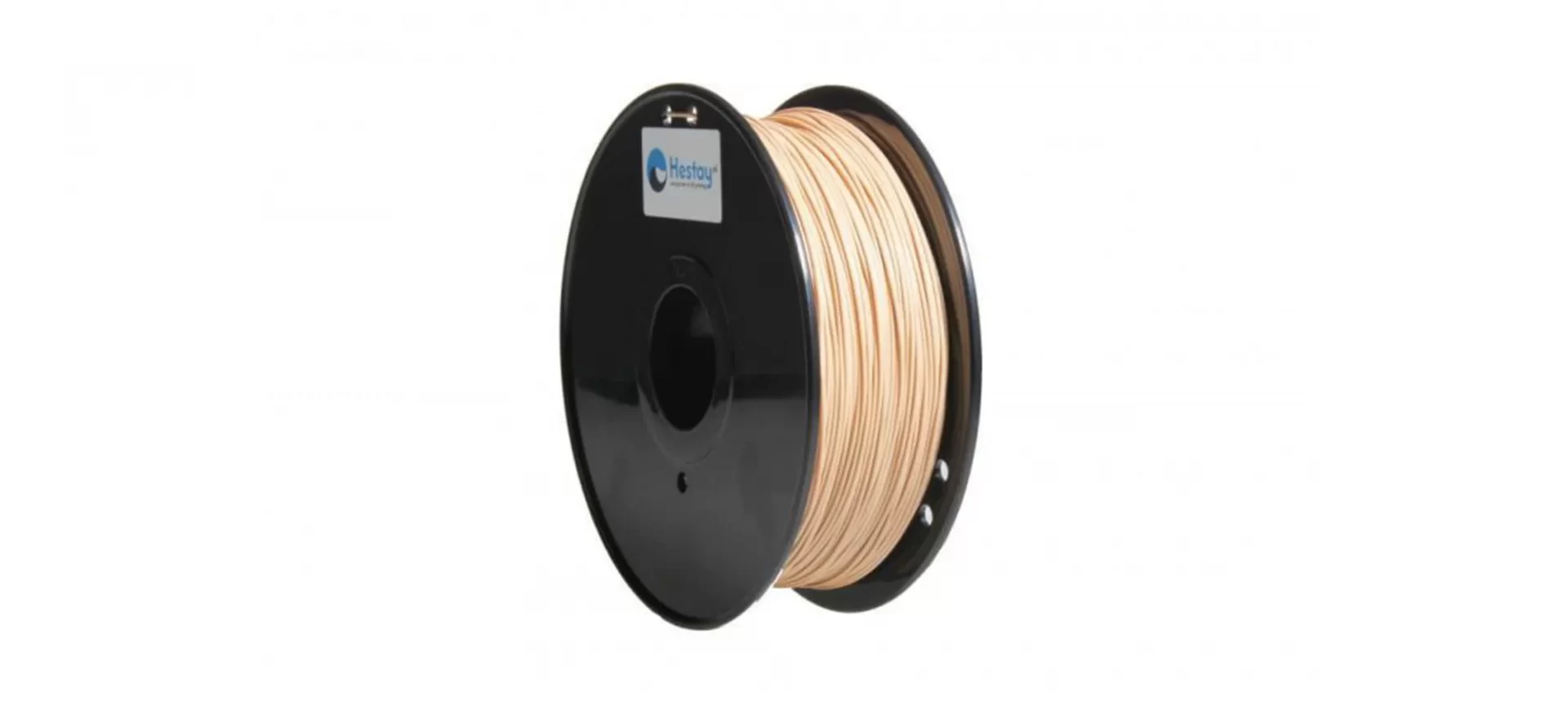
Although if seen from the amount, the company has nothing more than one finish of wood filament, this wood filament comes in three different diameters i.e. 1.75 mm, 2,85 mm, or 3.0 mm.
The first diameter is the recommended diameter for beginners in the field of 3D printing because they have more chances of making a mistake than others.
And if you an experienced person who loves to experiment with larger filaments, you can experiment with larger diameters that are mentioned. They will give you unique results.
All you have to make sure is that you have an extruder that can handle nozzles with large diameters. These spools cost $42.29 and come from the Netherlands.
FormFutura
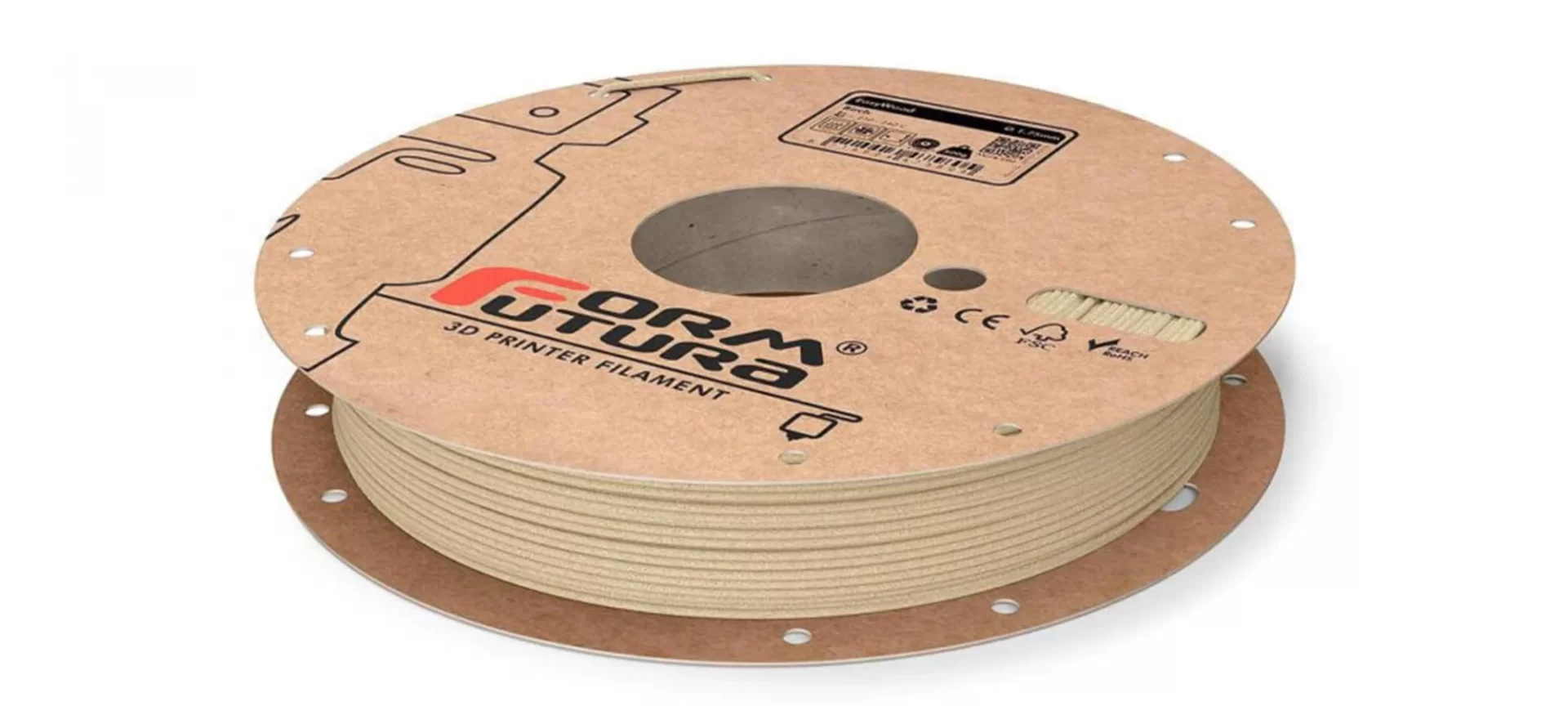
The company is a Dutch filament manufacturer that offers up to seven different kinds of wood filaments which are called EasyWood.
The claims that are made by this company are: 1) they consist of seven different colors and 2) They are claimed to be a warp-free filament.
What makes this filament a rather alluring choice for your venture into 3D printing of wood is the filament offering of larger color selection. The filament’s composition is 60:40 PLA: Wood.
For that 40 percent, the woods that the company offers are pine, cedar, olive, coconut, willow, ebony, and birch.
The nozzle diameter offered by this company is 1.75 mm and 2.85 mm, whereas the spool size is 500 grams of the filament.
The filament is priced at $30 and the printing temperature recommended for this filament is anywhere between 200 to 240 degrees Celsius whereas, for a heated bed, it is between 0 to 60 degrees Celsius.
RS Pro
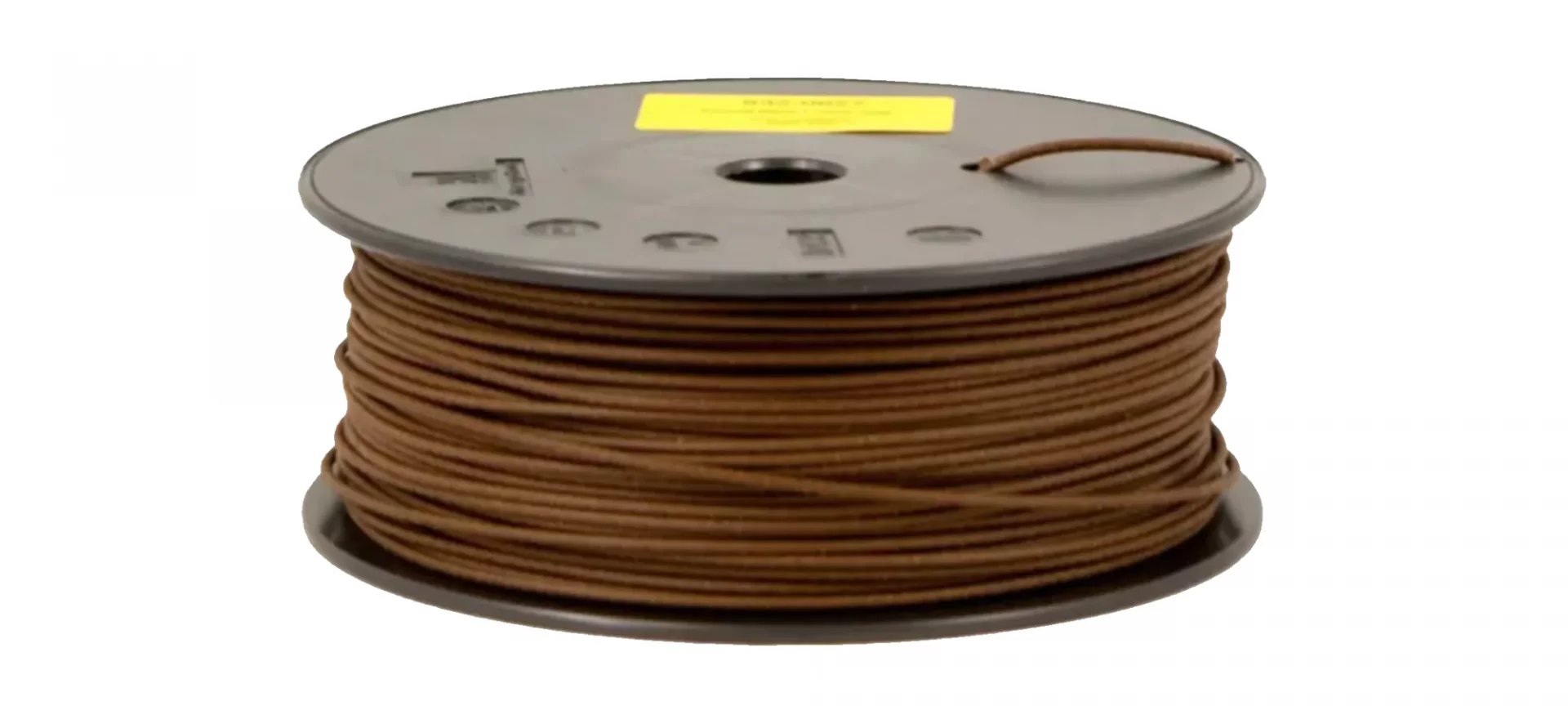
If you are looking for parts and functional prototypes that are Tropical wood in color, this company has something for you. They sell a filament of that color.
And this is a small but noticeable spectrum of variation speckles that translate straightway from the spool to your finished object without detracting from the overall shade.
So, if you can imagine this picture, think simply of a tree’s bark that is almost never all one uniform in color; this wood filament reflects that beautifully.
The cost of this printer is $20.75. It acts like other standard wood blend filaments, so check out this variety for subtle depth to your finished color.
Suggested Articles
Best Wood 3D Printers
Wood 3D Printing Guide: How to 3D Print Wood
The Conclusion
We have tried in this article to accommodate all the important points regarding wood filaments. Although 3D printing with this filament is not as easy as 3D printing with other filaments, because a lot has been known about the other filaments since their invention.
But, wood filaments and facts about them are still being discussed by experts all over in the field. There is not a much-finished project using this filament as much as they are with other filaments.
But, that is just a matter of time. Say, ten years from now, you could have a wood filament as one of the main sources of making your home’s furniture.







